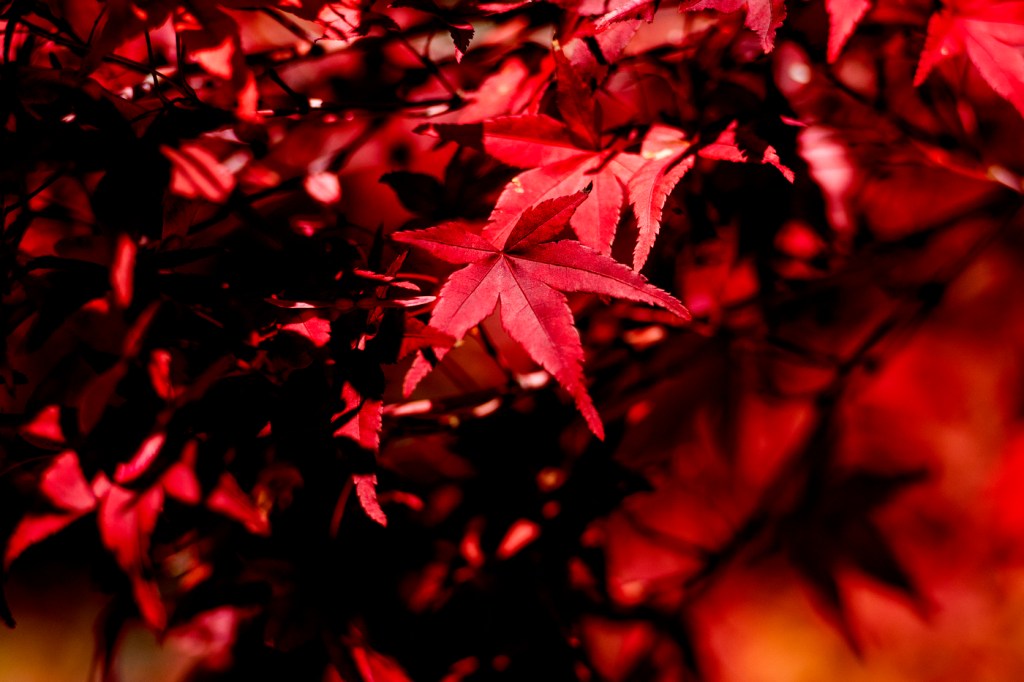Fall foliage season may be short—but brilliant—this year

Don’t blink or you might miss the foliage season in New England this fall.
The summer drought and heat that have scorched leaves and even killed some trees in the forest likely will result in an abbreviated leaf peeping season, says Stephen Schneider, director of horticulture and grounds at Northeastern.
“The trees that are stressed will probably change color and drop their leaves a little faster than normal. In the region along woods and roadsides where there’s been no irrigation, you see the leaves are falling from the trees already,” Schneider says.
“It will probably be a shorter season,” he says.
Northeastern’s Boston campus will be a literal bright spot, however, thanks to irrigation efforts that have offset the worst effects of drought for the thousands of trees and shrubs that dot the university.
“Our Boston campus will be in great shape. Get out and enjoy it while it lasts,” Schneider says.
Joshua Rapp, conservation scientist at Mass Audubon, says the brilliance and duration of the foliage display depend “on how things go in the next few weeks.”
“If the drought continues too much longer it will be really bad for foliage,”Rapp says.
The drought shuts down the process by which trees use photosynthesis to create oxygen and energy in the form of sugar, Rapp says.
“This has been a long enough and strong enough drought that the trees kind of give up. We’re starting to see that. We’re starting to see leaves drop off early,” Rapp says.”
“If they drop off early you end up with a dull fall.”
The dead, brown clumps of leaves that can be seen in some locations are a sign—a bad one—the trees did not have enough time to prepare for winter dormancy by phasing out the green-pigment chlorophyll in their leaves and sending nutrients down to their roots, Schneider says.
“When leaves are stuck on the trees and they are brown, that was more or less a sudden death,” he says. Only time will tell if the trees are still alive in the spring.
If Schneider had his way, it would rain about half an inch a day for the next seven nights to refresh the trees and lessen their stress.
“Just slow and steady rain while we’re sleeping,” he says. “In the morning the sun would come up and we’d have that nice fresh smell in the air.”
As long as trees have adequate moisture, New England’s string of sunny days could turn leaves especially bright, Rapp says.
That’s because production of a red pigment called anthocyanin, which acts as a sunscreen for leaves losing their green chlorophyll, is heightened during sunny days, Rapp says.
Having a cold snap—meaning temperatures 20 degrees below average—is also good for fall foliage because trees wind up production quickly and pull chlorophyll from their leaves to reveal lots of red and orange colors.
Lack of a cold snap typically results in trees taking their time to settle in for the winter, with the result that more muted golds and browns predominate, Rapp says.
“All those seasonal metabolic sequences that happen affect the foliage display of trees,” Schneider says.
To see color on the Boston campus, look no further than Centennial Common, where sugar maples turn red and a Chinese chestnut and a three-flower maple by Ryder Hall display shades of orange, Schneider says.
“There is a line of native tupelo on Forsyth Street in front of the law school … that turns a very deep red,” he says.
The U.S. Drought Monitor says recent rains “improved abnormally dry conditions” in northern Maine and northern New Hampshire.
Drought conditions in New Hampshire, Vermont and Maine are better than in Massachusetts, which is experiencing extreme drought in the central region and severe drought in the east and west.
The New England Fall Foliage Forecast by Yankee magazine says those who want a guarantee they will see hills carpeted in bright foliage should consider a trip farther north.
“Where the drought has had less impact—especially the White Mountains, the Green Mountains and the mountains of western Maine—we should see typical foliage conditions, which is to say the colors should be spectacular,” the forecast says.
The New England fall display “is a combination of climate and the particular tree species we have here,” Rapp says.
He says one out of four trees in Vermont is a sugar maple, a species known to reveal vibrant reds and oranges in autumn.
How long New England will be known for its foliage season depends in part on the rate of climate change, Rapp says.
If the first cold snaps happen later and later, leaf peeping opportunities may become “less spectacular over time,” he says. “Foliage may not pop quite as much.”
“Over longer time scales, the trees that are happy living in New England now are going to be happier living farther north,” Rapp says.
Thinking about the more immediate long term, Schneider says he hopes there will be enough moisture in late summer and fall to help trees accumulate enough root mass in dormancy to survive harsh, cold winters.
For now students, staff and parents can thank the Northeastern grounds crew for the irrigation efforts that ensure trees on campus turn color in the fall, even if they are stressed by the heat.
“We have many, many red maples. They put on a fantastic display every year,” Schneider says.
“We will have fall color.”
For media inquiries, please contact media@northeastern.edu.






